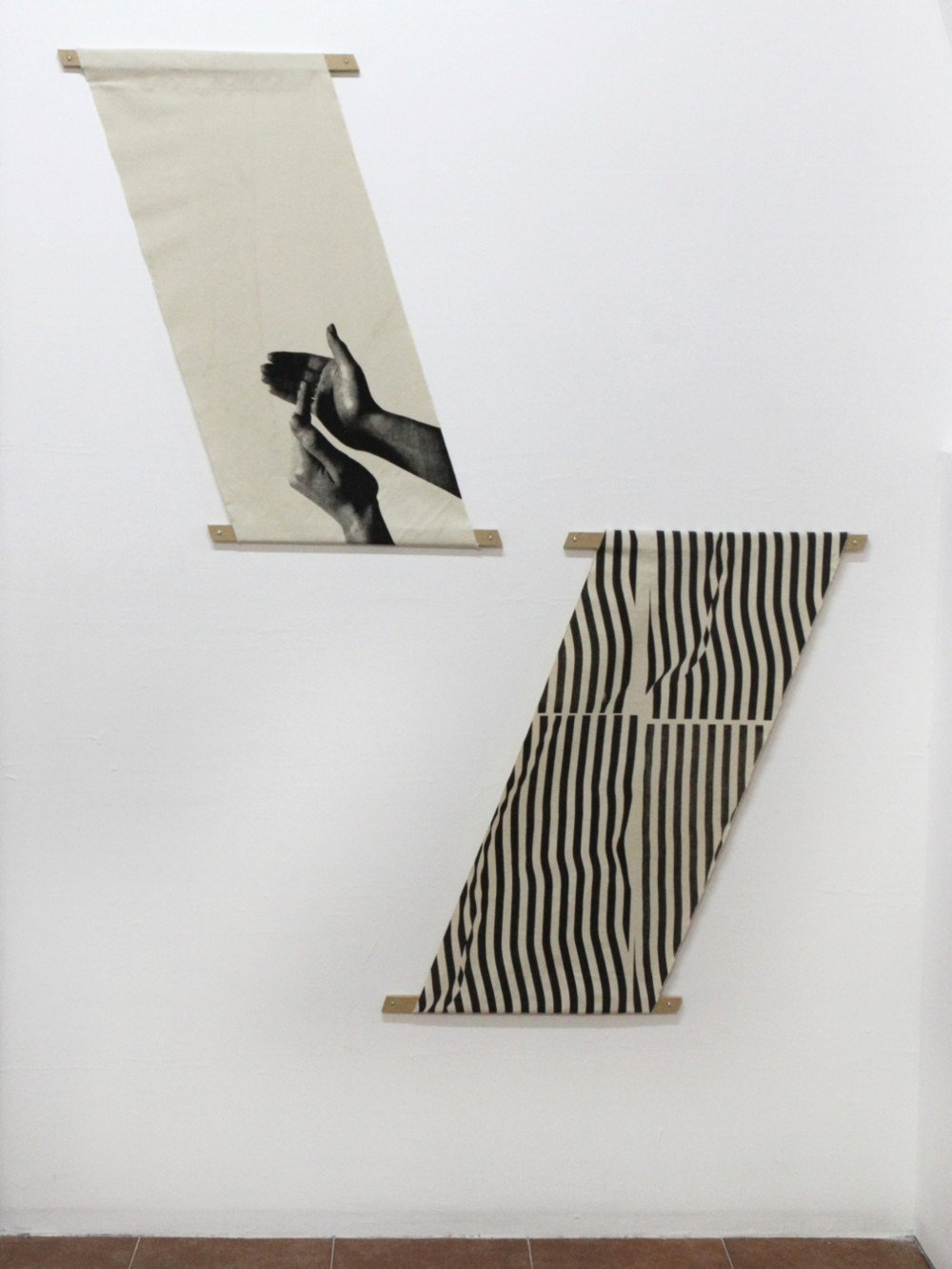A Natural Syntax for Rhythmic Forms and Semiotic Rotations, BID PROJECT
A Natural Syntax for Rhythmic Forms and Semiotic Rotations is a group exhibition with woks by Ditte Gantriis, Henry Jackson Newcomb, Fay Nicolson. The semiotic point of convergence for every one of them is the twisting complementarity of theme and structure: everything turns back and forth - in space and time - in order to use the dualistic character of signs from nature, according to the human body and the body of things, to create basic designs.
Ditte Gantriis’ work concerns itself with the idea of caricature in its attempt at examining the condition of contemporary culture. The artist sees the caricature as a defining characteristic of the world we have created, a world in which all features are exaggerated or reduced according to dominant trends. It is a world where brand names have transcended the objects they once adorned to become flexible signifiers of value with which consumers can built identity, and where behaviour has become rituals performed for the sake of reaffirmation. Thus, to look at a painting, to eat sushi, to listen to Beyoncé is not to really see the art, taste the food, or hear the music, but rather to perform an already scored activity which bears a certain value, readily exchangeable in an economy of cultural capital. However, acknowledging the truth of the feelings and desire that animate this system, Gantriis’ work puts her interest into play without passing judgement. Instead, her work is both earnest and humouristic, critical and celebratory.
Henry Jackson Newcomb’s work explores the aesthetics of materials and the human body through spatial collage and juxtapositions of objects and abstract form. A repetitive approach to process and the layering of elements establishes a relationship between the artist and viewer. Significant subjects become reoccurring motifs, deconstructed and evolved into future dialogues after being recorded. Refined lines introduce figurative elements, as gentle curves emerge out of angled layers and abstracted backdrops.
Fay Nicolson. She is interested in the physicality of images and repetitious making processes. Shifting fluidly between photography, print, paint she tries to create distance between a visible surface and what we expect to know about it. Document and the textile are important to her thinking: the document as a malleable, fictitious, porous record, as an image-object loaded with cultural value; the textile as a structured image, laboured and layered slowly from one narrative thread that overlaps to form a textured surface. She works in series to generate large bodies of work that play with limited tools, situations or elements. Recent bodies of work include: Marginal Notes (a series of analogue photographs and photograms manipulating materials within the studio) and We exist! We have the will! We are producing! (digital prints on silk that evoke modernist designs for textiles). Most recently she developed a series of large scale works that combine paint and silk screen printing on un-primed canvas. Rippled striped fabric, disembodied postures or digital brush marks are scattered rhythmically across the work. Bars of colour weave between these motifs operating like visual scores for performance or sound. She brings these compositions together like visual poems, trying to attain a sense of rhyme, rhythm and repetition. These works are activated in the studio or gallery by the presence of a body (occasionally her own but also by performers or viewers). For example, she often places a choreographed body in the documentation of these works to generate a relationship between them both; which is backdrop, which is supporting structure; which inscribes the other with significance? When installed in a gallery these works act between paintings, screens or barriers, dividing spaces or acting as guides to choreograph an exhibition.
Exhibiting artists: Ditte Gantriis, Henry Jackson Newcomb, Fay Nicolson
Curated by Domenico de Chirico
A Natural Syntax for Rhythmic Forms and Semiotic Rotation
Bid Project, December 18 - January 30
www.bidprojectgallery.com








